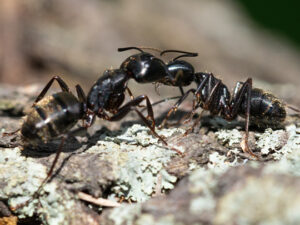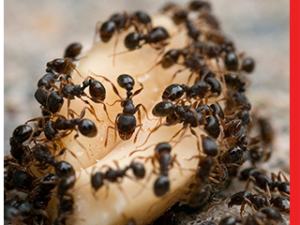
Leafcutter ants are known for their gardening skills. They will grow fungus in specialized chambers within their colonies, and they will use this fungus for food. These fungi are very precious, and the ants have to protect both their gardens and themselves. To make matters worse, they will live in colonies of millions of closely related ants, so the spread of disease is a major threat. On top of that, ants, unlike humans, do not have an adaptive immune system that can learn how to survive new pathogens that enter their bodies.
Leafcutter ants also have the disadvantage that their queens only produce fertile offspring after several years, creating a long time gap between generations. On the other hand, you have microbes, which will only need a few minutes to reproduce. Theoretically, it is almost impossible for these ants to evolve the needed defenses against the microbes.
So how do leafcutter ants square this circle? They use their own friendly bacteria. Certain species from the leafcutter ant family have developed specialized cavities on their bodies, and these cavities are home to a species of bacteria called Pseudonocardia. On top of that, the leafcutters will secrete substances that are rich in nutrients for these bacteria. In exchange, these bacteria will create toxins that the ants can use to protect their crops of fungi.
The ants also create antifungal toxins by themselves, and when the two chemicals work together, they are very adept at preventing the proliferation of alien toxins that pose a threat to the nest. This type of combination is currently being researched in order to create stronger antibiotic medicines for humans that will be able to prevent or overcome the resistance that bacteria can often evolve.
In fact, research into how combining different antibiotics can prevent bacteria resistance has been going on since the 1950s, but the research never gained any traction with the mainstream. Recently however, there has been a resurgence in this field, and while at the moment it may not be advisable to take multiple antimicrobial drugs at once, since the side effects compound and become more acute, researchers are looking into various solutions, such as using drugs in succession to get the same antimicrobial effect. Furthermore, this research is now more important than ever, since the number of drug-resistant microbes continues to grow, while the number of new antimicrobial drugs stagnates and grows slowly.











